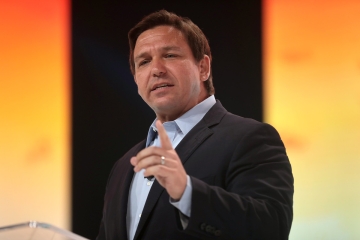In the fast-moving, highly-energized world of school choice and parent-empowerment advocacy, education savings accounts (ESAs) are the hottest thing since vouchers, maybe even hotter, inasmuch as they equip parents (in many jurisdictions) with flexible dollars to spend on behalf of their children’s education, not just a chit that can be delivered to a conventional school.
Here’s how EdChoice—organizational legacy of Milton Friedman—defines them:
ESAs allow parents to withdraw their children from public district or charter schools and receive a deposit of public funds into government-authorized savings accounts with restricted, but multiple, uses. Those funds—often distributed to families via debit card—can cover private school tuition and fees, online learning programs, private tutoring, community college costs, higher education expenses and other approved customized learning services and materials. Some ESAs, but not all, even allow students to use their funds to pay for a combination of public-school courses and private services.
The University of Arkansas’s Patrick Wolf terms ESAs “the future of private school choice. It’s the model that provides the maximum amount of customization.”
There’s no denying that they’re spreading. Ten states already have ESAs in some form— Iowa and Utah joined the group just last month with “universal” versions—and the Wall Street Journal reports that a dozen more legislatures are weighing bills to create them. At the federal level, House Republicans are seeking to expand the popular 529 savings plans (originally designed for college tuition) into quasi-ESAs.
It’s not quite an avalanche. Just the other week, Virginia lawmakers rejected several ESA measures and nothing of the sort seems to stand a chance in deep blue states.
But there’s been steady movement in this direction, no doubt accelerated by Covid and the desire of more parents to extract their daughters and sons from unsatisfactory public schools and take charge of their own education, whether in private schools, home schooling, or various hybrids. And the pressure will surely mount as more GOP politicians try to score points by climbing onto the parent-empowerment bandwagon.
The latest wrinkle is commonly termed “universal” ESAs, for which all parents with school-age kids are eligible, unbound by family income, regardless of whether their children already attend private schools, and flexible enough to be used for a host of education-related expenditures. Notre Dame law professors Nicole Garnett and Richard Garnett say they:
...represent a definitive and principled move beyond school choice to parental choice…. [W]hile it is reasonable to expect that, at least in the short term, most families will use ESA dollars for private school tuition, ESAs are more than school-choice programs. They are true parental-choice programs, and catalysts for real-world education pluralism and diversity, giving parents the option of using the public dollars allocated for their children’s education not only for tuition but also for “microschooling,” instructional materials for homeschooling, tutoring, and education therapies.
Consider me wary, particularly of the free-swinging, almost-anything-goes version of universal ESAs. I’m a long-time advocate of school choice and, over the decades, have lauded many versions of it. I’ve practically memorized the Supreme Court’s century-ago ruling that “The child is not the mere creature of the State; those who nurture him and direct his destiny have the right, coupled with the high duty, to recognize and prepare him for additional obligations.”
Yet I’ve also lived through enough school-choice enthusiasms to conclude that doing this right is not quite as simple as empowering parents. With three decades of experience with charter schools under the country’s belt, we’ve learned a few things. At least I have.
Start with the fact that even good parents often make dubious education choices, choices that ill-serve their kids in the long run. Instead of seeking out schools that maximize children’s future prospects by equipping them with solid skills, knowledge, and (one can hope!) values and behavior patterns, some parents settle for convenient locations or are beguiled by the claims and advertisements of shoddy schools in search of pupils. The very same parents may not enroll their kids in summer school despite Covid learning losses, failure to pass third grade reading guarantees, or lots of absences during the year and much to make up.
We can (and should) push for more rights and decision-making for parents, but let’s not be naïve about what will result, much of it good for kids, but some not. Too many of today’s “schools of choice”—charter, private, and district-operated—have mediocre-to-awful outcomes and aren’t racking up solid gains, either, yet they’re full of kids whose parents selected them.
No public policy can stop parents from making bad decisions—and a surfeit of policy is paternalistic—but those writing ESA laws (and charter laws, voucher laws, etc.) can boost the odds of good decisions by ensuring that parents regularly receive clear, accurate information on the educational progress of their kids and the performance of their schools, whether those schools are public, private, or some sort of hybrid.
Sadly, we must also acknowledge that some kids have lousy, absent, or overwhelmed parents, some of them addicted, abusive, or simply oblivious. That’s why we have—for better and worse—Child Protective Services, the Milton S. Hershey School, and much more. Again, it’s important to empower parents and give them choices—but there needs to be suitable backup when parents don’t exist or can’t or won’t take responsible action. Mostly that means operating quality district public schools as the default for kids whose parents aren’t choosers.
Turning from demand to supply, we need to recognize that, when lots of money is floating around, some folks will grab for it by starting shoddy (but lucrative) schools, filling board and staff with friends and relatives, leasing a facility at exorbitant rates from themselves or their cousins, and deploying nothing that resembles a coherent curriculum. This potential hazard is well understood by sophisticated ESA supporters, but may not be clear to hyperventilating lawmakers. But they can reduce the risks by setting criteria for schools and insisting that whatever agency licenses them engages in due diligence and regular audits. If it’s not a government agency—we at Fordham, for example, authorize a dozen Ohio charters—some public authority needs to watch its performance. (“Trust but verify” isn’t limited to arms control.) And the potential penalties for defrauding kids of a decent education should be vivid and painful.
All those issues (and more) have arisen in the realms of charter school and voucher programs, and many states have had to take steps to clean up the mess, to reduce if not eliminate the education version of waste, fraud, and abuse.
I expect these failings will afflict ESA’s, too.
But that’s not quite the end of it, for “universal” ESA’s bring several more hazards that have already begun to appear in the media: the “windfall” effect when tax dollars are used to pay for private school tuitions that well-off parents (which does not include many private-school families) were already paying for on their own; the possibility that entrepreneurs will set up shop in wealthy areas where parents can “top up” the ESA dollars while ignoring communities with greater need for good education options; and the use of ESA dollars by parents to purchase things with, at best, a hazy relationship to K–12 education—tickets to amusement parks, trampolines, and such. It doesn’t take many such extravagances to put a cloud over the whole policy.
This problem can be mitigated by judicious phasing-in and monitoring of universal ESA programs. We have considerable experience with similar programs in the health realm—HSAs—and know that regulators and managers can set and enforce clear guidelines as to what is and isn’t allowable.
But we also know what follows when overzealous lawmakers ignore such risks. Besides the waste of public dollars, we can anticipate public outrage, media yammering, political posturing, then overreaction and overregulation to the extent that the original mission gets compromised.
Some readers won’t want to believe me, I know, but I’ve been around this track a few times. I wish my zealous revolutionary friends would anticipate the possibility of painful crashes, heed the advice of savvy advisors at ExcelinEd and Heritage, and consider placing a few “traffic calming” devices along the ESA road before their juggernaut suffers a broken axle.








